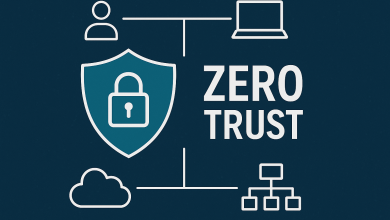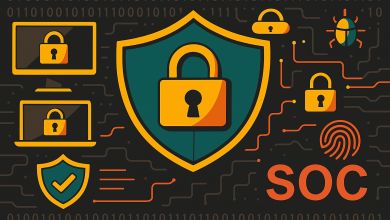
Most of the world still treats backup like an annoying daily chore, something you check off your to-do list, hoping you’ll never actually need it. It’s as if we’re still partying like it’s 1999, anxiously waiting for someone to hunt down backup tapes or else praying that off-site backups come through, keeping us offline for hours or even days. It’s crazy to think this is still a reality in 2025, right?
Here’s another reality check: Hackers know your backups are often your weakest link and that’s exactly why they go after them first.
We can do better. Gartner says it’s time to move beyond traditional backup and embrace what they refer to as cyberstorage – storage that’s cyber-protected by design, complete with AI-based active defenses. Cyberstorage ensures continuous data protection and instant recovery powered by hybrid cloud solutions. This tech already exists; what’s really needed is a shift away from the old-school mindset that’s holding us back.
Backup shouldn’t be a last-resort safety net you reluctantly rely on. It should be always on, seamlessly integrated into your infrastructure, and powered by AI intelligence to detect threats before they strike.
Moving Beyond Reactive Security
The concept of file-encrypting ransomware isn’t new; it was first introduced nearly 30 years ago by Young and Yung at Columbia University. They called it “cryptoviral extortion,” drawing inspiration from the facehugger in Alien – a parasite that latches on, takes control, and won’t let go until it’s done extracting what it wants. Sound familiar? That’s exactly how modern ransomware operates.
Fast forward to today, and despite three decades of advancements, many organizations are still relying on outdated, passive data protection measures that just don’t cut it anymore. For the most part, organizations are stuck on periodical backups while signature-based defenses remain dangerously vulnerable as zero-day ransomware attacks surge. We need a more dynamic approach – one powered by AI-driven security that puts behavioral detection front and center.
AI-driven data protection tools constantly observe user and system behaviors, instantly spotting anomalies that signature-based tools miss entirely. This proactive approach means we detect and neutralize threats before ransomware even gains a foothold.
Active Defenses Built into Your Storage
Smart organizations aren’t just reacting, they’re integrating active defenses right into their storage systems. Cyberstorage does exactly that. By embedding defenses such as honeypots and AI-driven anomaly detection within storage infrastructure, we gain a critical new layer of protection capable of detecting and stopping attackers early. This approach isolates threats before they reach our critical data.
Cyberstorage isn’t about damage control after the fact – it’s about making your data inherently ransomware-resistant from the start.
But, even with strong security measures, businesses need a way to instantly bounce back when disruptions occur. That’s where instant recovery comes in.
Instant Recovery: The End of Backup and Restore Cycles
Traditional backup schedules capture data only once or twice a day, leaving gaps that can result in hours of lost work. Worse, restoring data after an attack or failure can mean prolonged downtime. Instant recovery eliminates these delays by capturing every change in real time, allowing for immediate rollbacks to a clean version without disruption.
Instead of taking systems offline for lengthy restores, instant recovery works in the background. Users can access files immediately, while any remaining data is restored on demand. This ensures seamless operations even after ransomware attacks, accidental deletions, or system failures.
The real advantage? No waiting, no downtime. Businesses no longer need to pause operations while restoring terabytes of data. With on-demand retrieval, already-recovered files are instantly available, and the rest is streamed in real time as needed.
Immutable Storage: Your Ultimate Defense
Immutable storage is another essential weapon in our cybersecurity arsenal. Attackers aren’t amateurs; they know your backups are your lifeline, so they’ll target them first. Solutions like Amazon’s S3 Object Lock or immutable storage in Microsoft Azure Blob Storage apply write once, read many (WORM) policies, making critical data completely tamper-proof, even if ransomware slips past initial defenses. This means your backups can’t be encrypted, modified, or deleted, eliminating the leverage attackers typically use to demand ransom.
Pairing immutable storage with active security defenses creates a powerful barrier that guards your data from external attackers and insider threats alike. Doing so ensures your backups remain reliable precisely when you need them most.
Building Resilience Together
We’re long past 1999, and ransomware isn’t going away anytime soon. But neither is our ability to fight back. Sure, backups help, but real data protection starts with us. Leveraging AI for advanced threat detection, embedding security directly within storage solutions, and deploying immutable storage collectively shifts the balance of power away from cybercriminals.
Hackers may love targeting backups, but we don’t have to make it easy for them. Let’s make World Backup Day 2025 the moment we turn the tables – with smarter, stronger, and always-on protection.





